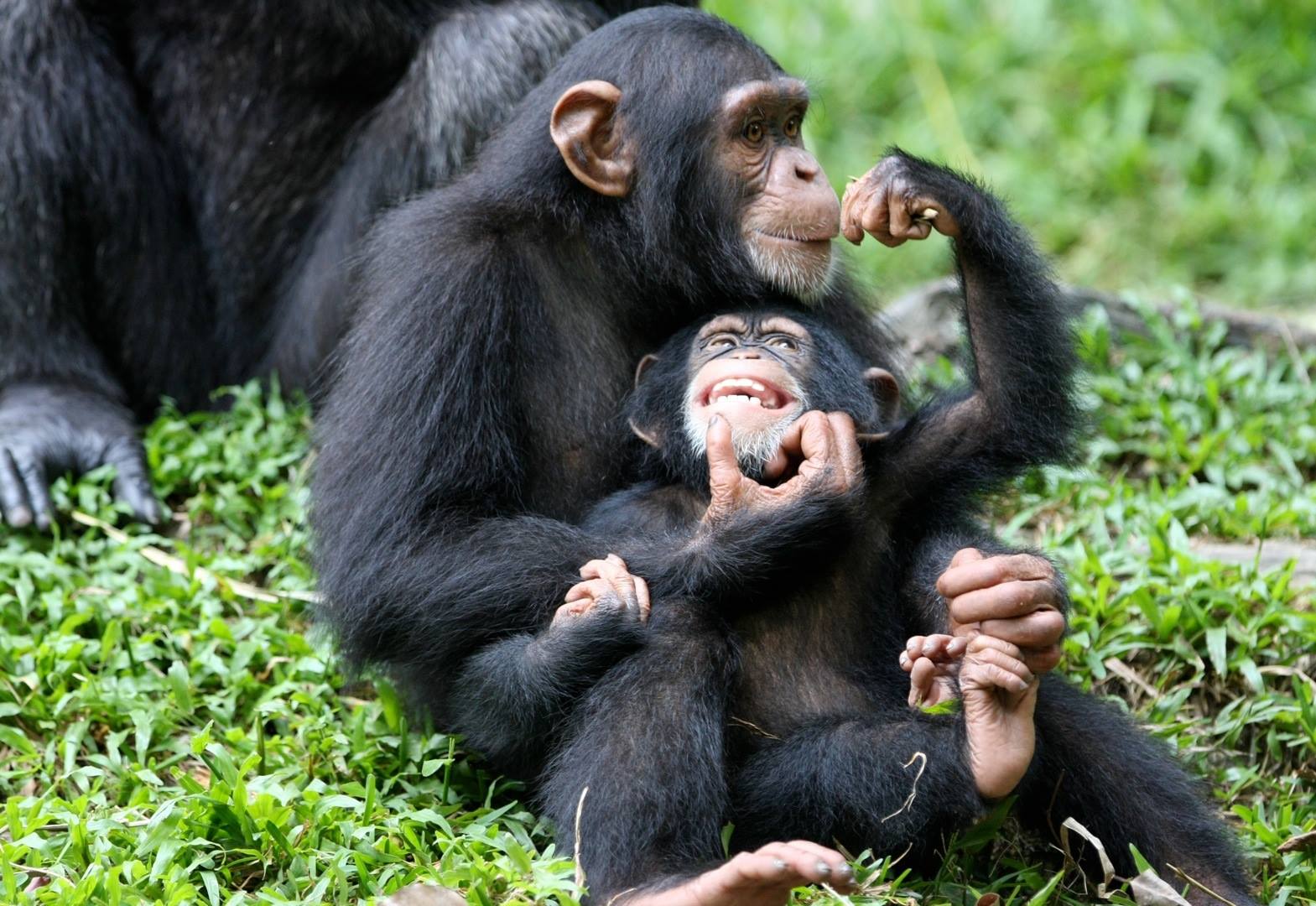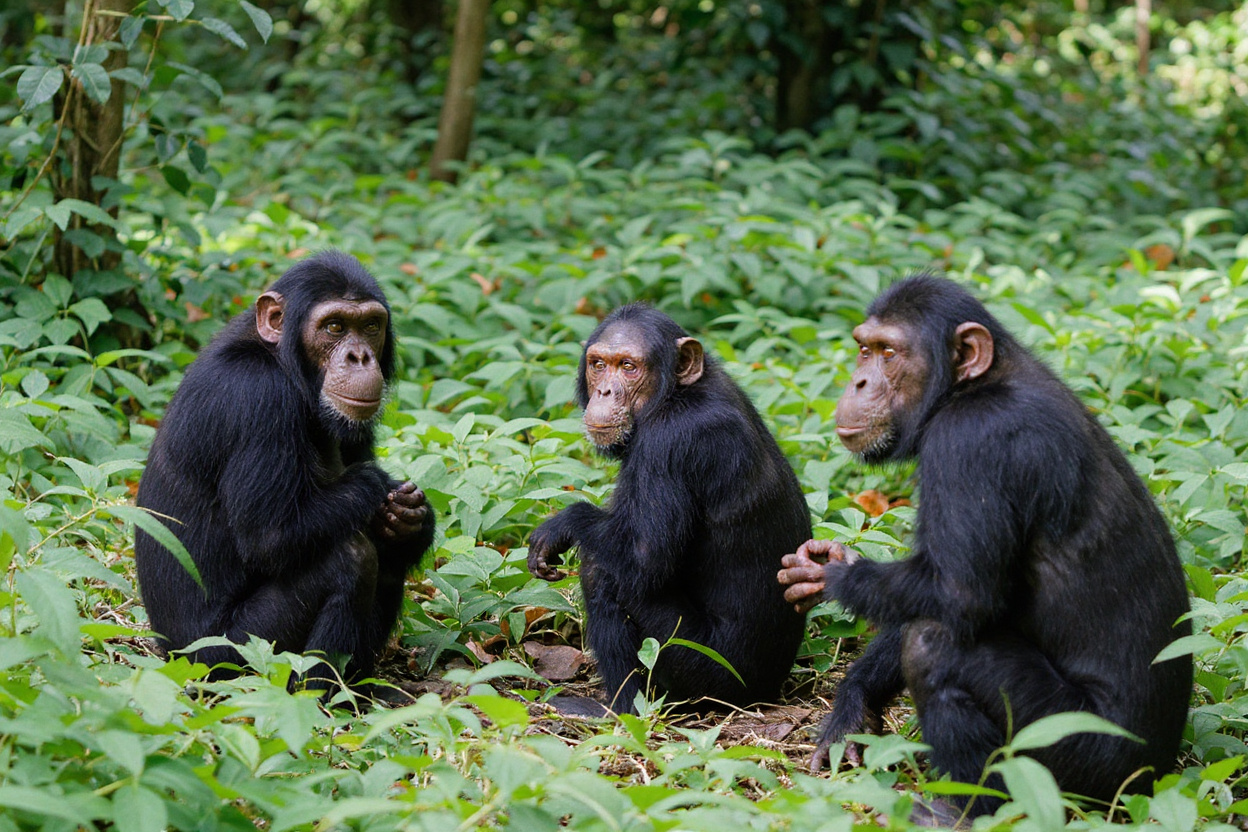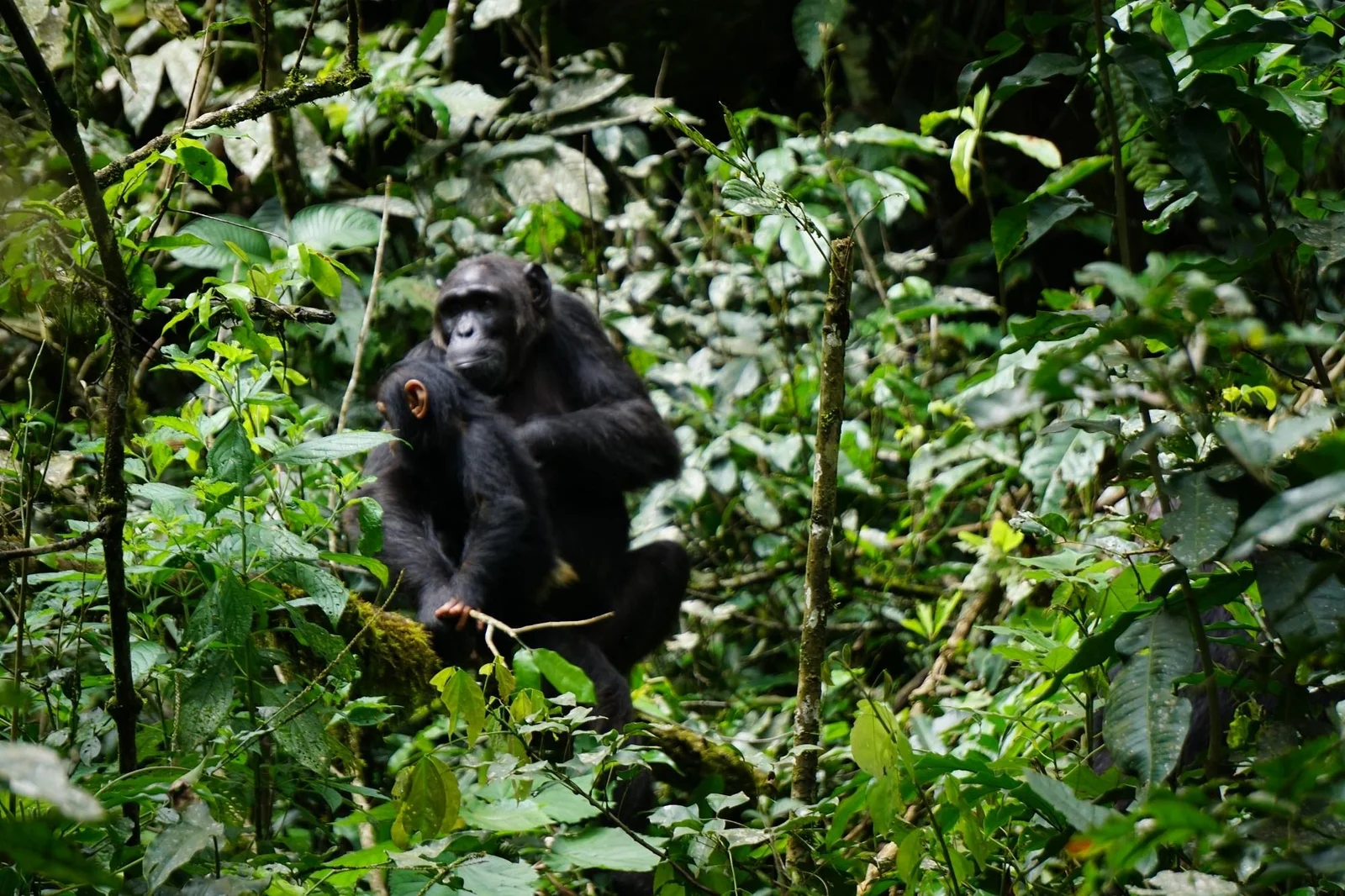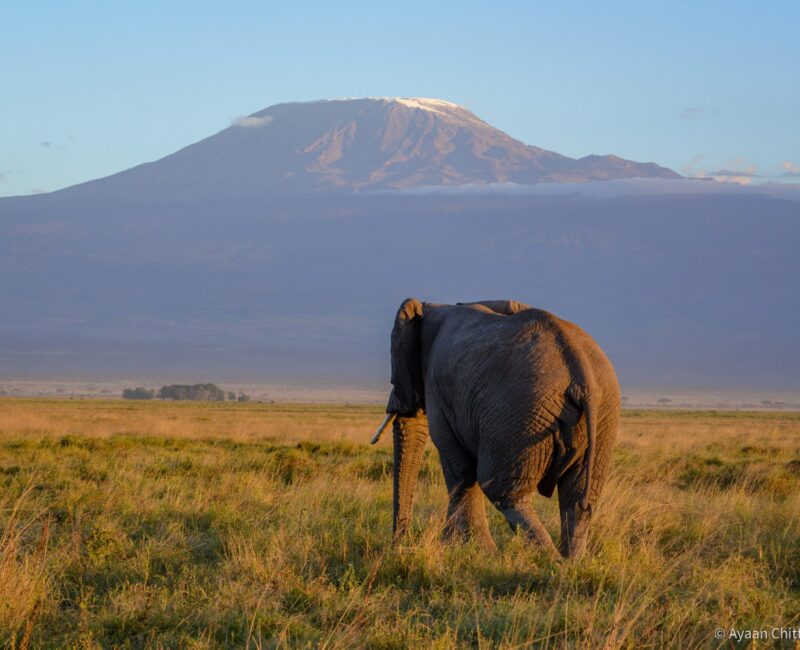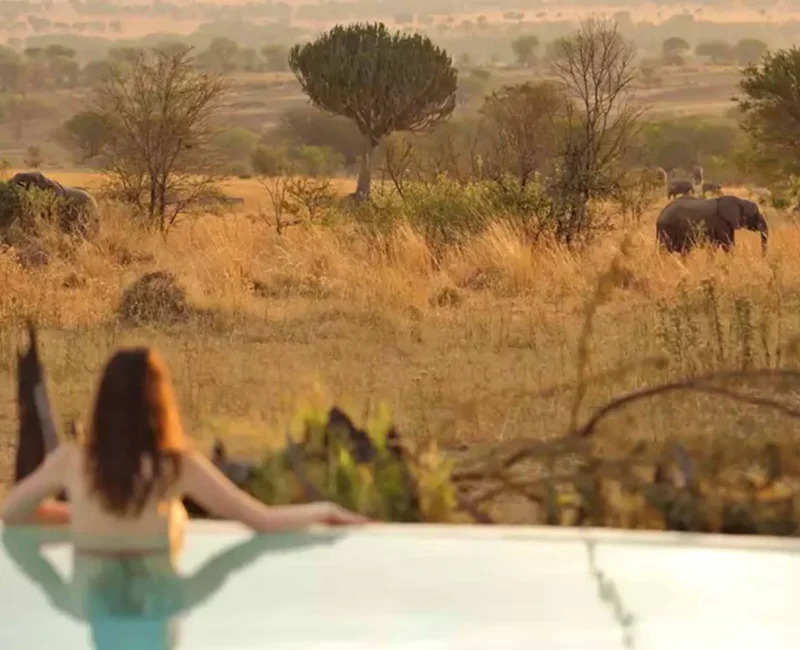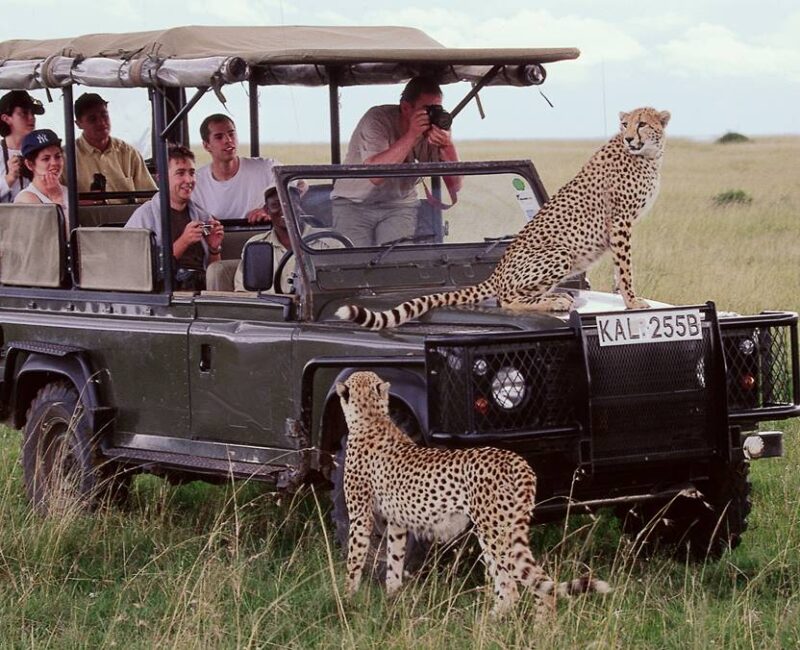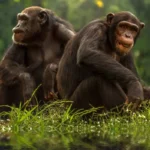
What Is the Difference Between Chimpanzee Tracking and Chimpanzee Habituation?
October 14, 2025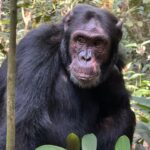
What Makes Chimpanzee Tracking in Uganda Unique Compared to Other African Destinations?
October 15, 2025What Kind of Terrain Should I Expect During Chimpanzee Tracking?
For wildlife enthusiasts planning Uganda Safaris, a common question arises: What kind of terrain should I expect during chimpanzee tracking? Understanding the terrain is essential for preparing physically and mentally for the adventure. Uganda is renowned for its Uganda Chimpanzee Safaris, particularly in Kibale Forest National Park, Budongo Forest, and parts of Murchison Falls National Park. These areas offer unique trekking experiences that combine rich biodiversity, lush tropical forests, and varied landscapes, giving travelers an intimate encounter with one of Africa’s most fascinating primates.
Introduction: Understanding Chimpanzee Tracking in Uganda
Chimpanzee tracking is more than a simple walk in the forest; it involves navigating trails, steep slopes, riverbanks, and occasionally dense undergrowth. This question—What kind of terrain should I expect during chimpanzee tracking?—highlights the importance of preparation, proper gear, and physical readiness. EcoQuest Safaris specializes in designing Uganda Best Safaris that not only address terrain challenges but also integrate other experiences such as Uganda Gorilla Trekking Safaris, Uganda Birding Safaris, and Uganda Cultural Safaris. By understanding the terrain, travelers can plan a safe, enjoyable, and immersive safari experience that blends adventure, wildlife observation, and cultural exploration.
Forested Trails and Dense Canopy Areas
Many travelers ask: What kind of terrain should I expect during chimpanzee tracking? A significant portion of chimpanzee trekking occurs in tropical rainforests. In Kibale Forest National Park, for example, trekkers navigate narrow trails surrounded by towering trees, thick undergrowth, and dense canopies. The forest floor may be uneven with exposed roots, slippery patches, and occasional mud, especially during the rainy season. These forested areas are home to a variety of wildlife, from primates like colobus monkeys to exotic birds that enhance Uganda Birding Safaris.
EcoQuest Safaris emphasizes the need for sturdy hiking boots, long sleeves, and walking sticks to ensure safety and comfort. Understanding What kind of terrain should I expect during chimpanzee tracking? in dense forests helps travelers anticipate the physical demands and plan their pace. Expert guides assist in navigating these trails, teaching how to follow signs of chimpanzee activity such as nests, vocalizations, and feeding patterns. Additionally, combining this forest trek with Uganda Gorilla Trekking Safaris provides a multi-layered primate adventure, allowing travelers to witness both chimpanzees and gorillas while exploring Uganda’s rich biodiversity and forest ecosystems.
Hills, Slopes, and Elevation Challenges
A frequent question is: What kind of terrain should I expect during chimpanzee tracking, and how physically demanding is it? Chimpanzee habitats often include hilly landscapes with gentle and steep slopes. Forested hills in Kibale or Budongo require trekkers to ascend and descend slopes, sometimes while carrying essential items such as water, cameras, or binoculars for bird photography and wildlife observation. These areas challenge endurance but reward trekkers with incredible views, unique photographic opportunities, and close encounters with wildlife.
EcoQuest Safaris designs itineraries that consider these elevation changes, ensuring trekkers of moderate fitness can participate safely. Knowing What kind of terrain should I expect during chimpanzee tracking? allows travelers to prepare physically, plan breaks, and use walking sticks effectively. Trekking across these slopes can be combined with Uganda Cultural Safaris, providing opportunities to visit hillside communities and learn traditional practices. This combination enhances the overall safari experience, allowing visitors to connect with both Uganda’s natural and cultural heritage while navigating diverse terrains.
Wetlands, Rivers, and Marshy Areas
Another important consideration for travelers asking What kind of terrain should I expect during chimpanzee tracking? is the presence of wetlands, rivers, and marshy areas within chimpanzee habitats. In Budongo Forest and parts of Kibale, chimpanzees often traverse areas near water sources. This means trekkers may encounter muddy trails, river crossings, and swampy patches. These environments are ideal for Uganda Birding Safaris, where photographers can capture water birds such as kingfishers, herons, and the elusive shoebill stork.
EcoQuest Safaris ensures trekkers are equipped with appropriate waterproof boots and walking gear, minimizing discomfort during wet conditions. Guides help navigate these areas safely, allowing travelers to focus on wildlife observation. By asking What kind of terrain should I expect during chimpanzee tracking?, travelers gain realistic expectations and can mentally prepare for variable conditions. Furthermore, trekking near rivers and wetlands can be combined with Uganda Wildlife Safaris in adjacent savannahs or wetlands, offering a rich mix of landscapes and species for a complete Uganda Best Safaris experience.
Open Savannahs and Grassland Sections
Some chimpanzee tracking trails pass through forest edges or open grasslands. Many visitors ask: What kind of terrain should I expect during chimpanzee tracking in these areas? In locations where forest transitions into savannah, trekkers encounter grassy plains, scattered trees, and open visibility. These areas often host diverse wildlife, including antelopes, monkeys, and birds, providing opportunities to enjoy both Uganda Chimpanzee Safaris and Uganda Wildlife Safaris simultaneously.
EcoQuest Safaris guides provide strategic advice on how to move quietly and safely in open terrains, ensuring minimal disturbance to wildlife. Open areas can also be excellent for photography, offering wide-angle shots of chimpanzees and other animals against scenic landscapes. Combining forest and savannah trekking with Uganda Gorilla Trekking Safaris enhances the safari itinerary, giving visitors a comprehensive overview of Uganda’s ecological diversity. By asking What kind of terrain should I expect during chimpanzee tracking?, travelers can anticipate terrain variations and plan appropriate gear, timing, and energy management for the journey.
Weather and Seasonal Terrain Variations
Travelers frequently ask: What kind of terrain should I expect during chimpanzee tracking, and how does weather affect it? Terrain conditions change seasonally in Uganda. During the rainy season, trails can become slippery, rivers swell, and forest floors turn muddy. In contrast, the dry season offers firmer paths, easier navigation, and fewer obstacles, making trekking less strenuous. Understanding seasonal terrain variations helps travelers schedule their Uganda Chimpanzee Safaris, combining them with Uganda Gorilla Trekking Safaris, Uganda Birding Safaris, and other wildlife experiences.
EcoQuest Safaris advises travelers to wear flexible clothing, carry rain gear, and pace themselves according to conditions. Knowledge of seasonal terrain ensures that photographers and wildlife enthusiasts capture the best moments without compromising safety or comfort. By asking What kind of terrain should I expect during chimpanzee tracking?, visitors gain insight into how weather impacts both accessibility and wildlife visibility, allowing them to maximize every aspect of their Uganda Best Safaris experience.
Combining Terrain Experiences with Cultural Engagement
While many ask What kind of terrain should I expect during chimpanzee tracking?, it is equally important to consider cultural opportunities along the trails. Trekking through forest edges, hills, and river valleys often brings visitors close to local communities. EcoQuest Safaris integrates Uganda Cultural Safaris with chimpanzee trekking, allowing travelers to interact with the Bakiga, Batooro, and Batwa communities. Visitors can learn traditional farming practices, participate in local ceremonies, and understand the role of communities in forest conservation.
Combining challenging terrains with cultural engagement enriches the safari experience. For instance, after navigating forest slopes and wetland areas, trekkers may visit villages to witness handicrafts, music, or storytelling. By asking What kind of terrain should I expect during chimpanzee tracking?, travelers also prepare for logistical planning, ensuring their Uganda Safaris balance physical activity, wildlife observation, and cultural learning. This integration reinforces EcoQuest Safaris’ mission to provide Uganda Best Safaris that are immersive, educational, and memorable.
Safety, Guidance, and Expert Support
Another frequent concern is: What kind of terrain should I expect during chimpanzee tracking, and how can I ensure safety? EcoQuest Safaris emphasizes professional guidance in all chimpanzee trekking experiences. Trained rangers accompany trekkers, monitoring chimpanzee behavior, guiding through challenging terrain, and maintaining safety protocols. This allows visitors to focus on wildlife observation and photography without worrying about environmental hazards.
Trekking through forest floors, hills, rivers, and grasslands can be demanding, but expert support ensures a manageable experience for travelers of various fitness levels. Combining Uganda Chimpanzee Safaris with Uganda Gorilla Trekking Safaris or Uganda Birding Safaris is seamless when guided by knowledgeable staff. By asking What kind of terrain should I expect during chimpanzee tracking?, travelers understand that expert support is essential for both enjoyment and safety, reinforcing trust in EcoQuest Safaris as a reliable provider of Uganda Best Safaris.
Final Thoughts: Preparing for Your Chimpanzee Trekking Adventure
In conclusion, the question What kind of terrain should I expect during chimpanzee tracking? is central to planning a safe, enjoyable, and immersive Uganda Chimpanzee Safari. Trekking terrain varies from dense forests and hilly slopes to wetlands, rivers, and open savannahs. Understanding these conditions allows travelers to prepare physically, plan gear, and anticipate challenges while enjoying the beauty of Uganda’s wildlife landscapes.
EcoQuest Safaris ensures that chimpanzee tracking is integrated into broader safari itineraries, combining forest treks with Uganda Gorilla Trekking Safaris, Uganda Birding Safaris, Uganda Wildlife Safaris, and Uganda Cultural Safaris. This approach creates Uganda Best Safaris that are comprehensive, enriching, and unforgettable. By preparing for terrain variations, leveraging expert guidance, and engaging with local communities, travelers gain a holistic understanding of Uganda’s ecosystems and wildlife. Asking What kind of terrain should I expect during chimpanzee tracking? is not just about logistics—it is the first step toward an extraordinary adventure that combines education, conservation, and authentic East African experiences.

